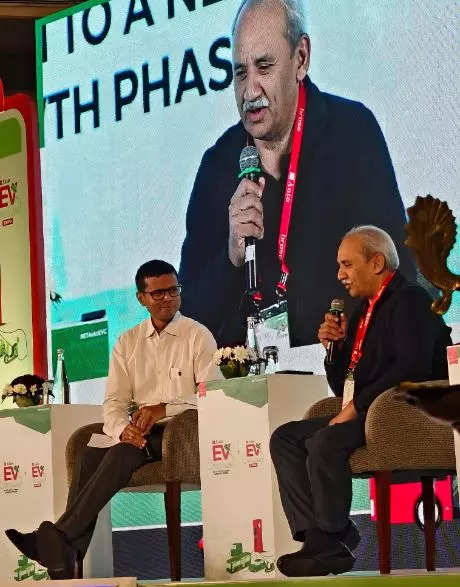
New Delhi: The iconic Chetak may soon be exported as Bajaj Auto is exploring the potential to sell this electric scooter in markets outside India.
Executive Director Rakesh Sharma had told analysts after the second quarter results that, “The ecosystem, I must say outside of Europe, is not as well developed as it is in India, but there are opportunities which are bubbling because of our very wide footprint all across the world. Obviously, we are monitoring these both for two-wheelers and three-wheelers and appropriately we will enter some of these markets. It is very much in our planning and again, I do not want to sort of jump the gun and announce which markets we are entering, but very much in the planning.”
The penetration of electric two wheelers outside Europe and the rest of the world is very low right now, but they are on the horizon. However, every electric scooter manufacturer is “dealing with the issues of cost, price, margin, range anxiety, and battery life and things like that,” Sharma had said.
And speaking at the ETAUTO EV Conclave on Wednesday, Sharma gave the example of the ASEAN market. “This is the largest two- wheeler market after China and India but it has been a traditional step-thru market with very strong incumbent brands. It has been difficult to gain market share here and this is where electrification has helped – everyone is now at the starting position,” he said.
Exports are the lifeline of Bajaj Auto, with half the top line and more than half of the company’s bottom line coming from exports’ proceeds. Bajaj Auto sells its two and three-wheelers in 96 countries across the globe. Latin America, Africa, Asia and the Middle East are some of the major markets for India’s largest two wheeler exporter. So exploring the export potential for Chetak electric is natural.
Earlier, Sharma had said that the work on developing supply chains for Chetak has led to increased production capacity and reduced costs for the company, “allowing us to open up the network, fix the right price for the product and drive sales.”
He had gone on to say that in the domestic market, Bajaj Chetak was “now in 120 cities with 140 exclusive sales and service stores covering almost 75% of the high-speed EV market. Our market share has increased from 4% in FY23 to 11% in September in retail terms. We are pushing to breach the 10,000 sales mark this quarter (September quarter) and then build on it in the next quarter. Within Q3, we will present two upgrades and follow this up with a further expansion of the range in Q1 of next year. Our network will expand to about 180 cities by the time we exit the financial year.”
Meanwhile, during the discussion in the Conclave, Sharma said that the global opportunity in electric two and three -wheelers was opening up “but not at the earlier frantic pace. Within its existing overseas markets, not more than 6 governments have advocated electrification of two-wheelers in the solid way that India has done….the market conditions now offer Bajaj Auto an opportunity to make inroads into markets with the existing, well entrenched players, through its electric offerings”.
And this would be achieved through collaborations. Sharma said forging collaborations with local players was not just restricted to the EV space but was getting bigger as the business got more complex.
He also hinted at work on an electric motorcycle, saying there were opportunities in this product and Bajaj Auto was working with KTM for high end products. On a mass market electric motorcycle, he said the intercity, 60-100 km range electric bike was “not as obvious a solution as scooters and needs more work. Charging infrastructure, electricity supply issues, etc mean a mass market electric bike will take some time to be developed”.
The Chetak journey is going places in the domestic market already though. So who is the company’s typical target customer? Sharma had told analysts that the company is targeting all those customers who are very economically driven and for whom this scooter format is acceptable. “So, you will find that people adopting the electric two-wheeler range from people who had previously owned an entry level motorcycle to somebody who is buying it in addition to supplementing a car in the garage. We have got the full spectrum of users and the proposition which is really getting traction for electric two-wheelers is one based on economics that simply as things stand now people save money depending on how much they ride every month. Anybody riding 50 km and above saves a substantial amount of money by shifting from ICE to electric.”
















